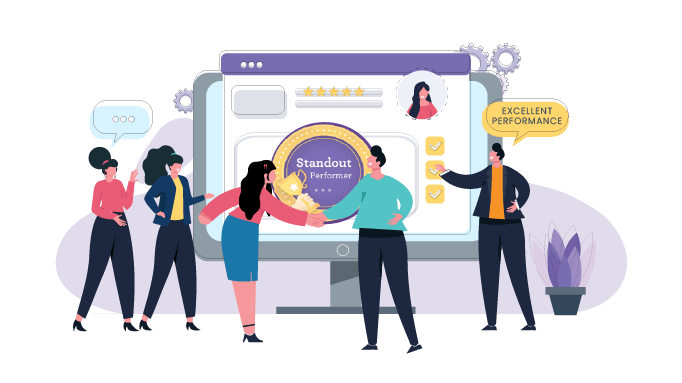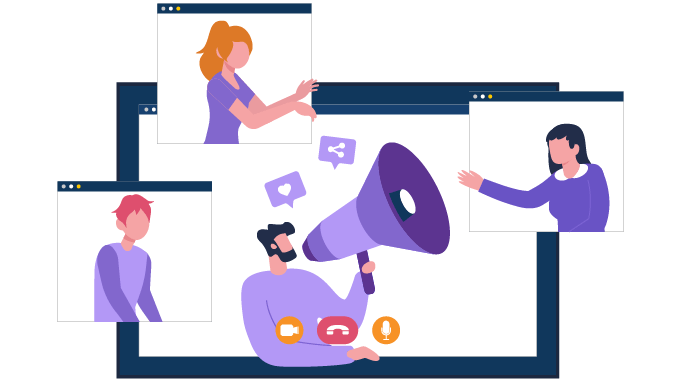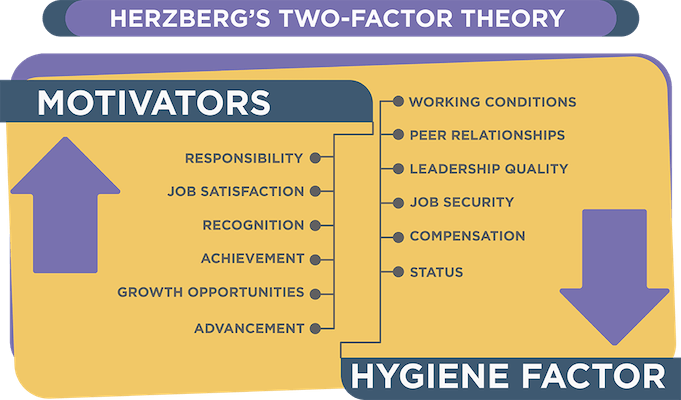27 Best Employee Retention Strategies for 2024
Hiring the right talents can be difficult, but retaining them is an entirely new challenge. One of the first signs of employees on the verge of leaving a job is disengagement. Therefore, creating a highly engaged workforce where employees feel valued is highly necessary. The initial step to ensuring this is implementing competent employee retention strategies.
Let us understand employee retention properly and explore its strategies to help you retain your top performers.
Key Takeaways
- What is Employee Retention
- What are the 30 Effective Employee Retention Strategies in 2024
- Why is employee retention important
- How to retain employees
What is Employee Retention?
In simple words, employee retention is the effort taken by an organization to hold on to its most prized asset - the employees! Moreover, a low or high employee retention rate directly impacts the company's overall business.
Knowing and managing your company's employee turnover rate is essential if you want to stay in business for the long haul.
Consequently, to manage and avoid high turnover, retaining key employees becomes a crucial element.
Implementing a data-driven staff retention strategy rather than firing point-blank is also an excellent practice. It is advisable to monitor the employee retention rate periodically- half-yearly or quarterly.
27 Effective Employee Retention Strategies in 2024
1. Hiring for Cultural Fit
Culture is what motivates and retains talented employees.
– Betty Thompson
People can develop skills and expertise. However, hiring someone keeping your cultural values in mind will result in more loyal and engaged employees. New hires can blend in with the team quickly. They feel comfortable and can contribute faster.
Ask questions that are related to your company values. Explain how the role correlates with the values. It will help them get an idea of what is expected of them.
2. Diversity and Inclusion

Research shows that organizations that promote and support DEI are 2.6 times more likely to increase employee engagement and improve retention.
Consequently, you must strive to create a workplace that identifies and respects people from all backgrounds and sexual orientations. There are some ways through which you can promote diversity and inclusion in the workplace. They are as follows:
- Provide diversity and inclusion training
- Implement fair and inclusive hiring practices
- Encourage dialogue about diversity.
- Strive for diverse leadership representation.
- Celebrate diversity through events and recognition.
3. Clean and Hygienic Workplace
Hygiene is the most important factor in any work environment. It may seem obvious, but a clean and tidy work environment facilitates employee well-being and safety. Irrespective of your work line, you must make your workspace clean and comfortable if you want your employees to be productive.
Employees who feel safe and secure in their work environment will be more productive and efficient.
4. Hybrid Workplaces

Flexible work arrangements have become one of the top things people look for in a new job. They have become an expectation rather than a benefit. The hybrid workplace has been in high demand for the convenience it offers to employees. It allows employees to choose between working remotely or on-site.
- This is why hybrid working can be a win-win situation for both employees and employers.
- It can help employees save time and money while commuting.
- It improves work-life balance, increases productivity and job satisfaction levels
- On the other hand, employers can save on overhead costs, avoid office politics, and reduce absenteeism.
- It gives them access to a diverse talent pool.
5. Reduced Workdays
Typically, people who work long hours or leave the office last are seen to be more dedicated and productive. Let's look at two scenarios.
Employee 1 does not take any breaks (except for lunch). They finish their tasks and decide to leave after 6 hours of work.
Employee 2 occasionally takes 10 minutes of cigarette breaks and engages in "coffee machine" chats. Then they finish their tasks and decide to leave after 8 hours.
Both the employees have fulfilled their daily obligations but at different times.
Alex Soojung-Kim Pang vouches for the same in his book Rest: Why You Get More Done When You Work Less. He mentions that the state of being “busy” does not necessarily mean effectiveness. It is instead an obstacle to success.
The instances highlighted above shed insight into the importance of quality over quantity. You can efficiently complete your task within a limited time rather than working long hours and fetching no proper results.
Hence, prioritize efficient task completion and embrace rest over long hours of whiling away. This will lead to increased productivity and a sense of satisfaction among employees.
6. Rewarding Efforts and Not Just Results
It is easier to measure results than the efforts taken to get that result.
We have all been in situations where we worked really hard to get that sales deal or reach those numbers. In contrast, a colleague gets it at the snap of a finger. Not because we are less competent but because things don't always go according to our plans.
Companies must empathize with the reality of the ground and recognize their efforts.
A great example of this is how a US-based company, Next Jump. They have decided to reward employees based on how much they have helped their coworkers.
So, it's time to recognize and reward hard work rather than just appreciating results!
7. Workation
A workation, also known as a workcation, is an employee-friendly trend that makes your company stand out in talent acquisition. It happens when you combine "work" and "vacation."
Workation helps you define your culture and gain a competitive edge. If you want your business to be attractive to employees, communicate that you care for them and, in return, will make them love their jobs. A unique working environment can be a unique differentiator when improving your staff retention strategy.
8. Rewarding & Recognizing Employees

Sometimes, your employees expect more than a thank you or a pat on the back. Rewarding and congratulating them for their efforts is important when they fulfill their goals. Some ways to reward and recognize your employees are through appreciation, corporate gifts, point-based reward systems, performance awards, etc.
Learn More: Rewards and recognition platform
9. Creating a Culture of Peer-to-Peer Recognition

You know your staff retention strategies work when your employees trust and believe in each other. They will help and work as a team when they value each other. This will lessen internal conflicts and create a culture of peer-to-peer recognition.
10. Celebrate Employee Tenure with Service Yearbook

A service yearbook is an excellent way to recognize and reward your long-term employees for their years of service. It is a great addition to your company culture, helping to create meaningful employee experiences. Employee experience results in more employee engagement, which ultimately affects talent retention.
Employees feel valued and appreciated for recognizing the time and hard work they put into your organization.
11. Employee Health Insurance
You can give your employees more than just sick leaves and free health checkups.
LinkedIn gave its employees a mental week off to cope with burnout.
Apart from that, make sure there are strict safety protocols for a hygienic workplace. You can have a comprehensive health plan for your employees' overall wellness. Your health plan can include meal tracking, fitness tracking activities, etc.
Providing health insurance is another excellent way to take care of their wellness.
12. Providing Financial Wellness Programs
A financial wellness program is subjective in nature. It should be tailor-made to suit your employees' finances and goals. Some employee financial wellness benefits to include are:
- Retirement plans
- Student loan repayments
- Flexible paydays
- Personalized financial advice programs
Recommended Read: Financial Wellness Benefits: Why you should care?
13. Providing Monetary Benefits
One of the major reasons that make employees quit is the lack of compensation. To avoid this, you can give fair and just appraisals to every deserving candidate. A salary hike is another way to retain top performers. Your workforce would be demotivated if they did not receive the proper benefits.
Thus, leaders should build a competitive benefit package such as:
- Salary hikes
- Incentives
- Bonus
- Health benefits
14. Creative Ways of Compensation
Of course, a family lunch coupon, a care package, etc, sounds nice. But you must think beyond these short-lived delights. It shows that you are as invested in your employees’ growth as your company’s.
You can explore a creative range of compensation ideas. They are as follows:
- Wellness stipends for gym memberships, fitness classes, or mental health resources.
- Offering reimbursement for continuing education, certifications, or professional development courses.
- Subscriptions for OTT content platforms
- Paid time off for volunteer work.
15. ESOPs (Employee Stock Ownership Program)
ESOPs (Employee Stock Ownership Program) is an excellent way to compensate your employees as a bonus or incentive. Making the employees become your company's stakeholders helps them stay invested in its performance.
While ESOPs provide liquidity benefits for employers, they may not be ideal during the time when the company undergoes a struggle. In such situations, employees might perceive ownership as a burden rather than a motivation.
Some other versions of employee stock ownership include the Phantom Stock Plan, stock appreciation rights, and direct purchase plans. These plans offer alternative approaches to aligning employee incentives with company success.
While ESOPs can be a powerful tool for incentivizing employees and promoting company loyalty. However, carefully considering the company's financial health and employee sentiment is essential in determining the most suitable compensation strategy.
16. Sabbatical Programs
Sabbatical programs are a great way to retain top talents. It shows that you appreciate your long-term employees' hard work and service. The company's leave policy states that sabbatical leaves can last six weeks or more.
Employees can benefit a lot from sabbatical leave. They get a chance to develop new skills and work on their passion project. Some are just happy to spend quality time with their loved ones.
You can also organize a mental week off for your remote employees, if not for a month.
It is found that employees come back much more motivated and refreshed after a good long break.
17. Profit-sharing Plan
A profit-sharing plan is used by employers to distribute a portion of a business's profits to employees.
When employees are given a piece of the pie, they're more motivated to go the extra mile.
A profit-sharing plan is a great way for organizations to share profits with employees meaningfully. It can help retain valuable talent, incentivizing people to work harder and better over the long term.
18. Encouraging Open Communication

You can foster an environment where employees are unafraid to voice their opinions. In other words, they need a workplace where they can freely express their ideas and concerns.
An “open-door policy” is one of the most effective communication strategies to establish a culture of transparency and trust. It shows that you're always available to listen to their views.
19. Practicing a Feedback Culture

There’s feedback on the work. There’s feedback on the individual’s performance. And there’s feedback on how the individual’s doing in their career.
– Shell M Phelps
Regular feedback and suggestions can help you stay connected with your employees. During these difficult times, you must empathize with your workers and keep a check on them. This helps you to get the pulse of your workforce.
Communicate as often as possible. Ask them what virtual work challenges they are facing. Let them know what’s on your mind so they feel they are not alone in this.
This will increase their loyalty and trust in your leadership style and company.
20. Developing Orientation Programs
Good managers always keep their employees informed. They clearly explain the policies and expectations of the employee from the beginning. Furthermore, orientation programs help employees to understand how to contribute and excel.
Remember to include a cultural induction as well. This will help the new hires understand your core values and culture.
21. Conducting Exit interviews

Sometimes, letting go of an employee is inevitable. Hence, conducting exit interviews just before an employee is about to leave is very crucial.
An exit interview asks departing employees about their experience at the company. This process can help illuminate toxic management practices, departmental conflicts, etc.
It is, however, equally important to back up such an interview with a list of effective exit interview questions.
22. Shaping their Growth and Development
One of the most crucial employee retention strategies is helping employees achieve their short-term and long-term goals. It shows that you are invested in their future just as they are. Most millennials and Gen-Z workers will choose a lower-paying job if they see development opportunities.
Therefore, designing in-house corporate training programs can advance employees' professional development. Other methods include encouraging them to attend conferences, industry events, etc., which can increase employee retention strategies.
23. Altering Work Responsibilities
Doing the same work becomes tedious. In that case, don't make employees stick to their laid-down responsibilities. Involve them in various tasks and allow them to work with other departments. This will help generate better ideas and improve coworker relationships. It will also make them more skilled and advanced in their professional development.
You can also try to encourage creativity and give them personal growth opportunities.
24. Engaging in CSR Programs
Reports show that millennials and Gen-Z workers are more inclined towards social responsibility. They believe in giving back to the community. Especially in times like this, people value empathy.
Contributing to society and helping those in need are feel-good factors. It inspires loyalty and engagement in your people. A CSR initiative where the workers can contribute their participation is an excellent employee retention idea. It will go a long way in creating effective employee engagement.
Since physical team activities are impossible, virtual CSR activities are a much more workable option. You can organize activities such as virtual charity bingo. There are also some activities that you can do individually or remotely, such as planting trees, cooking for a cause, donating to the suffering communities, etc.
It fosters a sense of fulfillment and team bonding.
25. Bonding with Employees
People don’t leave jobs, they leave bad bosses.
– Marcus Buckingham
A good manager works continuously to nurture their relationship with the team members. Above all, bonding with employees outside work is as important as inside the office.
Team lunches, group treks, and excursions are ways to celebrate employees. Celebrating their achievements- a new house, marriage- will deepen your bond.
26. Initiating a Mentor/Buddy Culture
Most people don’t like to be micro-managed. Most people don’t like to be managed at all!
Clint Pulver is the founder and president of the Center for Employee Retention. He believes in leadership that helps, encourages, and supports their employees. In his book "I love it here," he tells us how mentorship over old-school management techniques is better. And how it can totally transform an average employee into a high performer.
Assigning a mentor or a buddy to a new employee is also a great onboarding idea. The newcomer can learn about their work and the existing techniques from his mentor. Moreover, a new employee can offer a fresh take on things. As a result, this will help generate creative and innovative ideas.
27. Virtual Team-Building Activities

Working in a virtual environment can be difficult for some employees. While you might think working from home or other remote locations would appeal to all workers. However, the ability to work virtually, like in an office setting, is not for everyone.
As a result, most remote employees feel isolated from their co-workers. They can't fully immerse themselves in the company's culture. Thus, virtual team building becomes necessary and often plays an important role in talent retention.
These activities are carried out by management to improve group processes and interactions and increase employee engagement and morale. It also develops better working relationships between employees.
Why is Employee Retention Important?
Employee Retention is crucial to an organization’s growth and success. The strategies of employee retention have their fair share of importance that adds weightage to the fruitful journey of an organization.
Let us take a glance at the importance in the section below.
- Employee retention is the surest way to ensure cost reduction. Retaining employees significantly costs less than constantly recruiting and training new ones.
- Losing out on experienced employees leads to a huge loss of institutional knowledge, skills, and relationships within the organization, customers, and partners. Hence, retaining senior and experienced employees will make your organization see significant returns as they undertake and master complex issues independently, benefiting the organization.
- Retention is a vital means to maintain and enhance customer service and satisfaction. Experienced employees develop a smooth rapport with customers over time. Losing out on them might weaken the rapport with customer service, as the new employees might take time and be less adept at problem-solving.
- Retention builds the morale of the employees. Witnessing limited turnover creates a sense of loyalty and teamwork among the employees. They feel their work is valued and get further motivated to work harder.
How to Retain Employees?
Explain ‘Herzberg’s Two-Factor Theory’ and how it helps to retain employees

Herzberg’s Two-Factor Theory, also known as the Motivation-Hygiene Theory or Dual-Factor Theory, was proposed in the 1950s by psychologist Frederick Herzberg. The theory emphasizes that two sets of factors majorly influence employee satisfaction and motivation at work: hygiene factors and motivators. Let us delve into each factor individually.
Hygiene Factors
These are extrinsic factors that cover the job context or work environment. They do not necessarily lead to satisfaction, but their absence can stir some form of dissatisfaction among employees. Hygiene factors include:
- Company policies: These comprise organizational rules, procedures, and administrative practices.
- Interpersonal relationships: This covers the nature of relationships with supervisors, peers, and subordinates.
- Salary and benefits: This includes compensation, job security, and fringe benefits.
- Work Conditions: This includes the physical work environment and amenities.
- Supervision: This covers the quality of supervision and leadership provided by managers.
The theory suggests that addressing hygiene factors can prevent employees from becoming prone to job dissatisfaction. But at the same time, it will not increase motivation or satisfaction. To truly motivate employees, organizations must emphasize providing motivation.
Motivators
These are intrinsic factors that lead to job satisfaction and motivation. They are directly related to work and include elements such as:
- Achievement: Attaining a sense of accomplishment and personal growth from work.
- Recognition: Getting acknowledged and appreciated for one’s accomplishments.
- Responsibility: Getting entrusted with interesting and significant responsibilities with autonomy.
- Advancement: Getting opportunities for growth, promotion, and career advancement.
According to Herzberg, these motivators are essential for creating a fulfilling environment that drives employees to perform their best. As a result, it leads to higher motivation, job satisfaction, and higher productivity.
Now, you might wonder how the theory helps retain employees. Well, it provides valuable insights in the following ways:
- Addresses hygiene factors: Organizations can prevent job dissatisfaction and reduce employee turnover by ensuring ways to meet hygiene factors.
- Provides motivators: Retaining talented employees and fostering long-term commitment will require organizations to focus on providing motivators.
- Tailors strategies: The theory also suggests that organizations should tailor their retention strategies by considering individual employee needs and preferences, as different factors may motivate different individuals.
- Continuous Improvement: The theory encourages organizations to consistently evaluate and improve hygiene factors and motivators that allow them to maintain a motivated and satisfied workforce.
Creative Ways to Retain Employees
While it is clear that retaining employees is crucial for organizations’ long-term success, it is to be noted that simply sticking to traditional ways of retention may not give you the desired result. The need of the hour is to develop creative ways to contribute to employee retention. The following are some creative ways that you may consider.
1. Learning expeditions
You can organize company-sponsored trips or expeditions that perfectly blend learning and adventure. This can include visiting innovative companies, exploring unique cultures, or participating in educational experiences.
2. Reverse Mentoring Program
This initiative could rather be a unique one to bring about a change from the traditional approach. In this program, you can give your younger employees a chance to mentor senior leaders on topics like social media, technology, or emerging trends.
4. Creativity challenges
You can step forward to host regular creativity challenges or hackathons, where employees are encouraged to collaborate and solve real business problems by developing innovative solutions.
5. Experiential Benefits
Offer unique experiential benefits, such as outdoor adventures, tickets to cultural events, or exclusive culinary experiences.
Final Note
By now, you must be clear that retaining top talent requires a strategic focus on employee needs. Organizations can boost retention by fostering engaging workplace cultures, providing growth opportunities, recognizing contributions, embracing flexibility, and building trust. Making employees feel valued and invested strengthens organizational agility and success.
Therefore, it is your turn to make your call and implement these strategies for your desired outcome.
FAQs
How to determine which employee retention strategies are best suited for my organization?
To determine the best retention strategies, you can do the following:
- Assess your organization's culture,
- Gather feedback from employees,
- Analyze turnover data and consider industry best practices,
- Tailor your approach to address specific challenges and priorities within your workforce.
How can I measure the effectiveness of employee retention strategies?
You can measure effectiveness by tracking metrics such as turnover rates, employee satisfaction scores, engagement levels, performance indicators, and feedback from exit interviews or surveys.

















